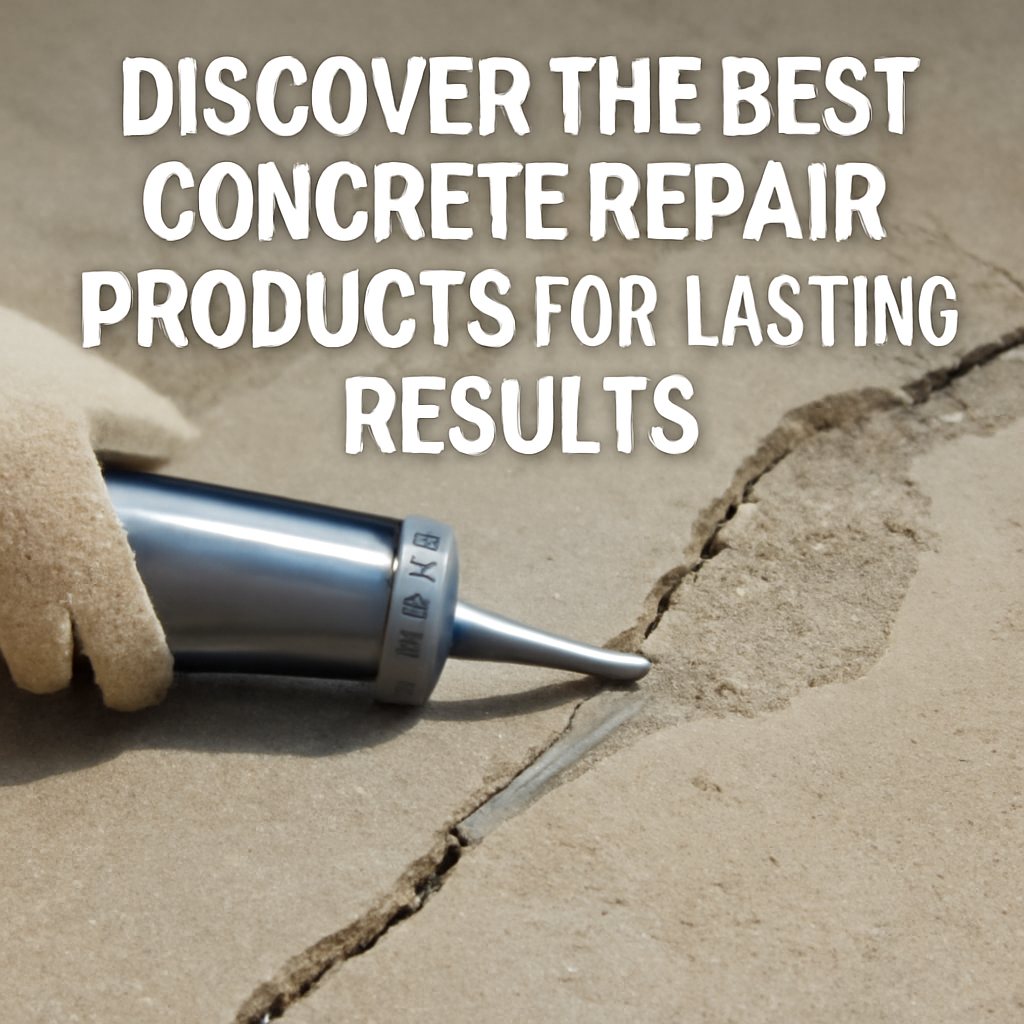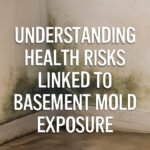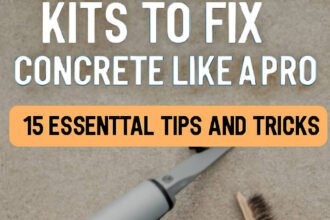Concrete is durable, but it’s not invincible. Over time, weather, water, chemicals, and heavy loads can cause cracks and spalling. Whether it’s a residential driveway or a commercial structure, proper concrete repair is key to preventing further damage and preserving structural integrity.
Using the right products isn’t just important—it’s essential. This guide will help you understand why concrete fails, how to fix it, and what products are best for long-lasting results.
Why Concrete Fails Over Time
Concrete can degrade due to several factors:
- Freeze-thaw cycles: Water enters cracks, freezes, and expands.
- Chemical exposure: Deicing salts and industrial chemicals break down the surface.
- Moisture infiltration: Continuous exposure to moisture weakens the matrix.
- Poor construction or mix: Bad batches or improper curing lead to premature failure.
- Heavy loads and impacts: Driveways and industrial floors are especially at risk.
Recognising the cause of the failure is step one. Step two is choosing the right repair solution.
Key Factors in Choosing a Repair Product
Not all cracks or damages are the same, and neither are repair solutions. Here’s what to consider when selecting a concrete repair product:
- Type of damage: Surface crack, deep crack, or structural issue?
- Indoor vs. outdoor: Some products aren’t UV resistant or waterproof.
- Cure time: Quick-setting formulas are great for fast jobs.
- Flexibility: Some areas expand and contract more than others.
- Compatibility: Ensure the repair material bonds well to old concrete.
Always read the product’s label and instructions for specific use cases.
Top 10 Concrete Repair Products on the Market
Below are 10 highly recommended products that stand out in performance, ease of use, and longevity.
1. Sika Concrete Fix
- Type: Polyurethane sealant
- Best for: Hairline cracks, wall repairs
- Pros: Excellent adhesion, weather-resistant
- Cons: Not suitable for structural cracks
Sika is a global brand known for reliable performance. This product works great for vertical and overhead applications.
2. Quikrete Concrete Crack Seal
- Type: Acrylic sealant
- Best for: Driveway and patio cracks
- Pros: Ready to use, blends with concrete colour
- Cons: Not for structural repairs
It’s a go-to for homeowners looking for a simple squeeze bottle solution.
3. DAP Ready-Mixed Concrete Patch
- Type: Pre-mixed compound
- Best for: Filling holes, minor spalls
- Pros: Paintable, easy to smooth
- Cons: Shrinks slightly after drying
This is a user-friendly option for quick patches and cosmetic fixes.
4. Rust-Oleum EpoxyShield
- Type: Epoxy
- Best for: Garage floors, commercial areas
- Pros: High durability, chemical resistance
- Cons: Requires surface prep and mixing
This is ideal when aesthetics and toughness matter
5. Red Devil Pre-Mixed Concrete Patch
- Type: Acrylic-based
- Best for: Small cracks and chips
- Pros: Tool-friendly, dries hard
- Cons: Not waterproof
It’s more for indoor jobs or surfaces not exposed to heavy wear.
6. PC Products PC-Concrete Epoxy
- Type: Epoxy
- Best for: Anchoring and structural repairs
- Pros: Heavy-duty bonding, high strength
- Cons: Short working time
Great for fixing load-bearing cracks or anchoring bolts into concrete.
7. DRYLOK Fast Plug
- Type: Hydraulic cement
- Best for: Active water leaks
- Pros: Sets in 3-5 minutes, stops leaks quickly
- Cons: Not flexible
A must-have for basement repairs and wet areas.
8. Sakrete Top ‘N Bond
- Type: Polymer-modified
- Best for: Resurfacing large areas
- Pros: Strong adhesion, thin application
- Cons: Needs thorough mixing
Perfect for renewing patios, sidewalks, and steps.
9. Henry Company HE300 Driveway Elastomeric Crack Filler
- Type: Asphalt-based
- Best for: Driveways and walkways
- Pros: Flexible, long-lasting
- Cons: Only for blacktop
Though not for concrete, it’s essential for concrete-adjacent repairs like asphalt joints.
10. RadonSeal Concrete Foundation Crack Repair Kit
- Type: Urethane foam
- Best for: Foundation wall cracks
- Pros: Expands to seal tightly, waterproof
- Cons: One-time use kits
It’s a professional-grade solution for serious cracks and moisture intrusion.
Application Methods for Concrete Repair
Surface Prep is Critical
Before applying any repair product:
- Clean the area: Remove dust, debris, and loose concrete.
- Use a wire brush: Open up the crack or damage.
- Moisten the surface: Some products require a damp surface to bond.
Tools You Might Need
- Caulking gun
- Trowel
- Mixing bucket
- Safety gear
Techniques Matter
- Fill in layers: Deep cracks should be filled in increments.
- Feather the edges: Smooth the repair flush with the surrounding area.
- Curing: Follow the product’s cure time for best results.
Safety Precautions During Concrete Repair
When working with concrete repair materials:
- Wear gloves and goggles
- Ensure ventilation if indoors
- Handle chemicals carefully
- Avoid direct contact with skin
Many products contain epoxy or hydraulic cement that can irritate skin or eyes.
Maintenance Tips After Repair
After repairing the concrete:
- Avoid heavy use for 24–48 hours
- Seal the surface to prevent moisture ingress
- Regularly inspect for new cracks
- Clean stains and debris to preserve aesthetics
Proper maintenance can extend the life of your concrete surface significantly.
Frequently Asked Questions (FAQs)
How long do concrete repairs last?
Can I use these products for basement walls?
Is epoxy better than cement-based patches?
Can I paint over repaired concrete?
What’s the best solution for vertical cracks?
Should I hire a pro for large cracks?
Conclusion and Final Thoughts
Concrete repair doesn’t have to be intimidating. With the right products and proper application, you can restore strength and appearance to damaged surfaces. From cosmetic fixes to structural reinforcements, these top-rated products deliver lasting results that stand up to time and the elements.
Always assess the type and extent of the damage before starting, and choose a repair method that aligns with the conditions. A little effort today can save a lot of cost and hassle down the road.









